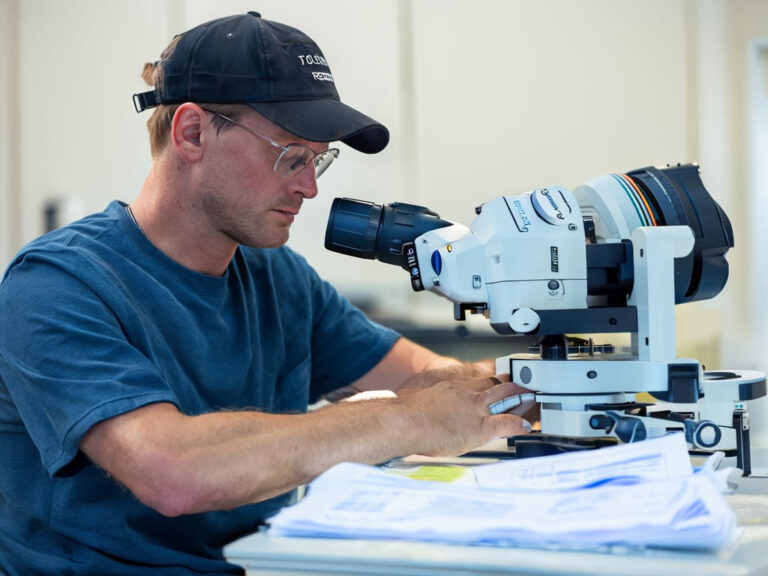Observation is a careful and silent activity to know about the prevailing phenomenon, event, or situation.” Observers and phenomena are both essential for observation.
Types of Observation
| 1 | According to Involvement | Non-Participant Observation |
| 2 | Participant Observation | |
| 3 | According to Conditions | Controlled Observation |
| 4 | Uncontrolled Observation |
Non-Participant Observation
The observer will remain outside to the occurrence, maintaining a distance for observation. Non-participant observation is straightforward due to the absence of instruments. This occurs when the observer remains outside to the group and only observes the occurrence.
Advantages of Non-Participant Observation
Nonetheless, non-participant observation possesses some advantages. The subsequent advantages of participant observation are as follows:

Objectivity and Neutrality
An observer may try to defend the group’s poor behavior as justified if he becomes emotionally and actively involved in the situation. He is unable to evaluate events impartially in this mental state. However, neutrality or objectivity can be maintained by non-participant observation. In this type of observation, the observer presents an objective and unbiased image of the group.
Ensure Respect and Collaboration
In non-participant observation, the researcher assumes an unbiased role. Consequently, each member of the group imparts him a distinct position and collaborates in his research.
Increased Willingness of the Respondent
Frequently, individuals do not hesitate to reveal their secrets, vulnerabilities, or informal matters to a stranger. However, they consistently hesitate to reveal such matters to an acquaintance.
Systematic Examination
In participant observation, the observer’s familiarity with the occurrences may lead to an unrecognized importance, resulting in their neglect. The researcher pays attention to even the minute detail. He systematically evaluates the advantages and disadvantages of each phenomena under examination.
Free from Groupism
In non-participant observation, the researcher always takes an unbiased position. His disengagement from little disputes facilitates the conduct of his research activities more efficiently.
Disadvantages of Non-Participant Observation
Some disadvantages of non-participant observation are as follows:
Subjectivity
When someone observes something without taking part, they don’t have a clear picture of certain events or activities. He can’t get more information by asking the other people in the group questions. So, all he has to do is understand and make sense of what he sees. Because he doesn’t fully understand, some of his results may be influenced by his own beliefs, assumptions, and preconceptions.
Insufficient Observation
The observer can only see what’s happening right in front of him. For the study, though, that is not enough and only shows part of the story. A lot more information is needed. As a member of the group and an active participant, he can learn a lot about the other people in it.
Formal and unnatural information
People in a group start to doubt someone who observes them without bias. When they are around someone they don’t know, they feel self-conscious and only give official information in a way that doesn’t feel normal. It makes people biased, and the viewer only gets formal knowledge, not real or normal things.
Discomfort to the Respondents
People in a certain group always feel bad when they know that someone from outside the group is judging how they act. Because of this, the tribe people sometimes don’t let strangers observe their social and cultural activities. If a researcher wants to learn a lot about a group, they should become a member of it.
Participant Observation
The observer must be integral to the phenomenon. It is expensive and challenging. Participant observation occurs when the observer integrates into the group being examined. This form of observation enables the observer to closely examine the group and their behavior.
Nonetheless, strictly non-participant observation is quite challenging. Comprehending the fundamental nature of a situation necessitates engagement and active involvement. It is inconceivable to envision a relationship where the researcher is perpetually present yet remains uninvolved. This scenario may be more advantageous for both the observer and the group. A hybrid approach utilizing both participant and non-participant methodologies is occasionally employed.
Goode and Hatt characterized participant observation as “the method employed when the researcher can conceal their identity to be accepted as a member of the group.” In this type of observation, the observer must remain a part of the group under investigation.
Advantages of Participant Observation
The advantages of participant observation include the following:

Observation of Natural Behavior
Participant observation can be employed to study the natural behavior of the respondent. When a group is aware of being observed by an outsider, they experience higher self-consciousness and discomfort, resulting in a loss of neutrality in their behavior and activities. In participant observation, the respondents are unaware of being observed. Their behavior is not limited by the awareness of being observed by an unfamiliar individual.
Proximity to the Group
In participant observation, the observer maintains an excellent connection with the responders. He maintains a really intimate primary contact with the group members. Consequently, he may engage in all activities from a proximate perspective, so enabling a more complex assessment of the scenario than that of a non-participating observer.
Investigating the Real Character
Typically, examining actual behavior necessitates direct involvement and interaction with group members in research settings. Participant observation enables the observer to perform a careful and comprehensive study of the group, thereby gaining insight into its true nature.
Enhanced Analysis
Through participant observation, the observer gains a deeper comprehension of the respondents’ emotions compared to an outsider. An individual residing in a slum area possesses a deeper understanding of the emotions and challenges faced by the inhabitants than someone from outside the community.
Offers the Chance to Explore Deeply
The primary benefit of participant observation is that it allows the observer to engage with the group in relation to different activities. He can therefore understand the importance of these activities that are, in fact, not accessible for observation. For instance, when an observer takes part in a Muslim religious ceremony, such as the “Slaughter of Animals on Eid,” they have the opportunity to witness various elements of the ceremony. Additionally, they can clarify any uncertainties by posing questions to the group members or by engaging in discussions to gain a deeper understanding of the event. The respondent typically finds it simpler to recount the event at the appropriate moment rather than before or afterward.
Disadvantages of Participant Observation
Participant observation has several disadvantages in addition to its benefits. The participant observation has the following disadvantages:
Lack of Objectivity
Engaging deeply with a group can lead the observer to compromise their impartiality. His emotional connection to the group undermines his objectivity and neutral evaluation. He might develop a certain affection for that group member, leading him to frequently rationalize their harmful actions as mere activities.
Biased Interpretation
The researcher establishes a unique position within the group as a result of his emotive involvement and intimate association with the members. He may be influenced or delighted by this and begin to provide them with uncritical support. As a result, he evaluates events from his own perspective rather than from a scientific one.
Overlooks Crucial Facts
The participant observer, due to their extensive familiarity, often perceives many critical events as having minimal or no importance. Consequently, he must familiarize himself with numerous significant matters. Someone who is unfamiliar often focuses carefully on even the smallest details, as everything seems novel to them.
Limited Range of Experience
In participant observation, the observer is restricted to a specific group owing to the limited range of experience. As a result, his experience becomes profound, but its scope is extremely limited.
Groupism
The observer’s active participation and closeness to the group may result in his involvement in group groupism/factionalism and quarrels. He is unable to refrain from advocating for a particular group. However, by doing so, he loses his position as an impartial observer with whom all parties are willing to collaborate. Therefore, the research’s objective is compromised, and the researcher encounters significant challenges in obtaining accurate information from the group.
Constraints of Participant Observation
There are specific circumstances under which participant observation is infeasible. For instance, it is infeasible to monitor criminals in a jail.
Controlled Observation
Controlled observation occurs when observation is conducted according to predetermined plans and experimental procedures, often in a laboratory under regulated settings. In a controlled study, the researcher predefines and regulates the study variables, as well as specifies the location, timing, participants, and instruments employed to conduct the research.

Uncontrolled Observation
A naturalistic observation conducted in conditions not influenced by the observer. This is the reason it is referred to as naturalistic observation. It occurs in a natural environment without external influence or control.
Steps in Conducting Observation
- Select the field: Select the relevant field and get basic information.
- Make preparation: Collect necessary material and make arrangements.
- Access the Field: The observer must be at the target area from the beginning of the phenomenon however, in non-participant observation do not realize people that you are an observer.
- Observe required information only: Be focused and avoid noticing unnecessary data.
- Leave the field: Record each aspect of the phenomenon and leave respectfully.
Principles of Writing an Observation
As you commence your study and begin recording your observations, it is essential to consider these strategies or principles.
- Record your research observations during your research session. If you cannot complete the task, remember to take notes immediately after the session. They will be fresher in your memory at that time.
- It is important to refrain from discussing the session with your teammates until you have compiled all your observations, especially if you are part of a research team. There may be instances where you remember things from the session inaccurately. It is important to discuss your observations with your team once you have finished writing up your notes. By analyzing your data, you’ll be able to identify patterns and trends.
- It is important to consistently document the audio during your sessions. Including video in your work, if at all feasible, enables a deeper understanding of the condition. This enables you to observe facial expressions, body language, and any contextual factors in the background.
- It would be helpful to keep track of important moments during your session by noting down timestamps. For instance, it would be helpful to record the timestamps for the various sections of the site that you covered with your participant.
- Pay attention to the smaller details in your observations. Occasionally, small gestures can make a significant impact. For instance, a participant who doesn’t have a mouse pad might have felt frustrated while trying to navigate your site.
- It’s important not to overlook important matters as well. Conducting research can be quite stimulating and exciting. Therefore, you may unintentionally ignore important details such as recording the name and role of your participant during the research session. Using templates and generic forms can be helpful for refreshing your memory.
- Once you’ve finished taking your notes, import them into Re-framer for a head-start with sense-making. Alternatively, take Re-framer with you and jot down observations as you go.






